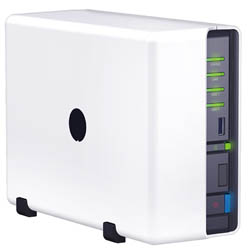 |
 |
 |
Network attached storage (NAS)
 |
Network attached storage (NAS) is the basically a dedicated data server that can be connected to the computer network to provides shared storage and centralized access of large amount of data to network clients or other application servers. A NAS device does not need to be located in the server. Several networked NAS devices may combine to form a LAN.
Multiple clients can read the file at same time. Availability of data has increased because access of data does not depend on a server so users can still read the data even when the application server is down. NAS can also improve performance as the NAS device only handles the delivery of data without other application processing.
![]()
Modern NAS consists of one or more hard disks implemented by RAID technology to increase the performance, capacity and fault tolerance. One key difference of NAS from standard localized RAID server is NAS can only be accessed normally via network with some network security filtering. The handling of data in the NAS is generally done by some embedded operating system such as LINUX or free BSD UNIX. When NAS failed, the complexity of NAS data recovery is therefore higher than standard RAID which could be accessed directly.
Usually NAS system consists of one or more hard disks, arranged in RAIDs (redundant arrays of independent disks) or logical, redundant storage container. A NAS device does not need to be located in the server but made up of several networked NAS devices to form a LAN. It can also allow simpler and low cost system such as fault-tolerant email, load balancing and web server system by offering storage services.
Common failures of NAS
| Here are some of the common failures for NAS server: |
|
In case of NAS failure, you may want to read the emergency RAID rescue if the situations are applicable so as to minimize data loss.
The recovery process and cost of NAS RAID recovery remains quite the same as standard RAID server.
Fill up data recovery request form |
Send your media for evaluation | Evaluation Stage | Data Recovery Process | |||


